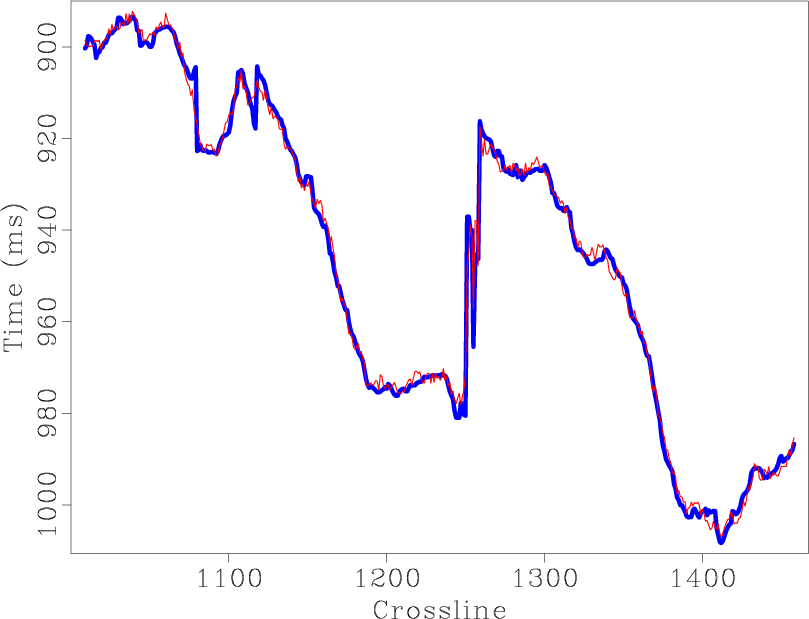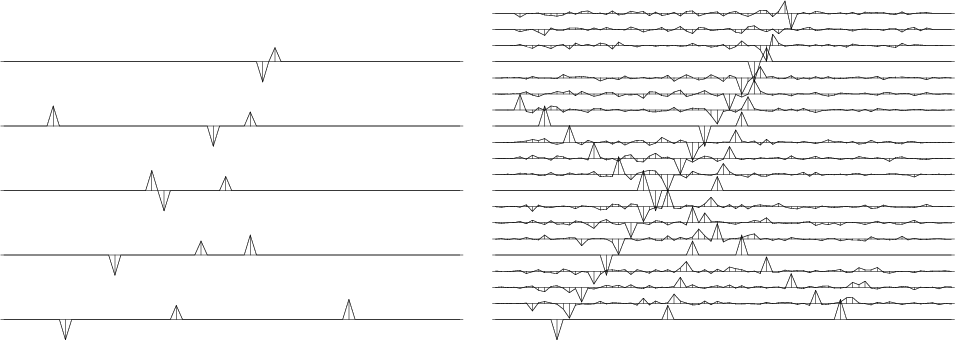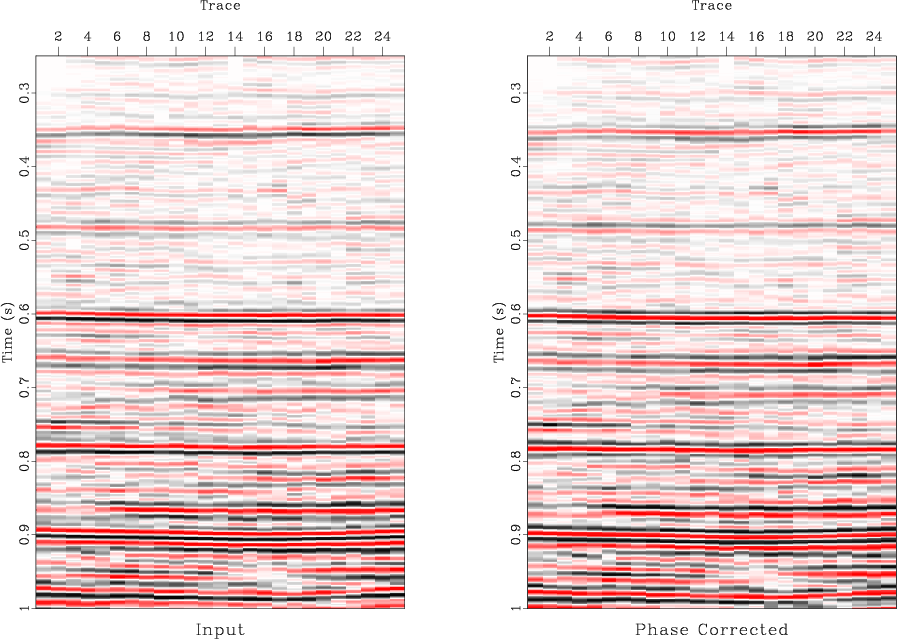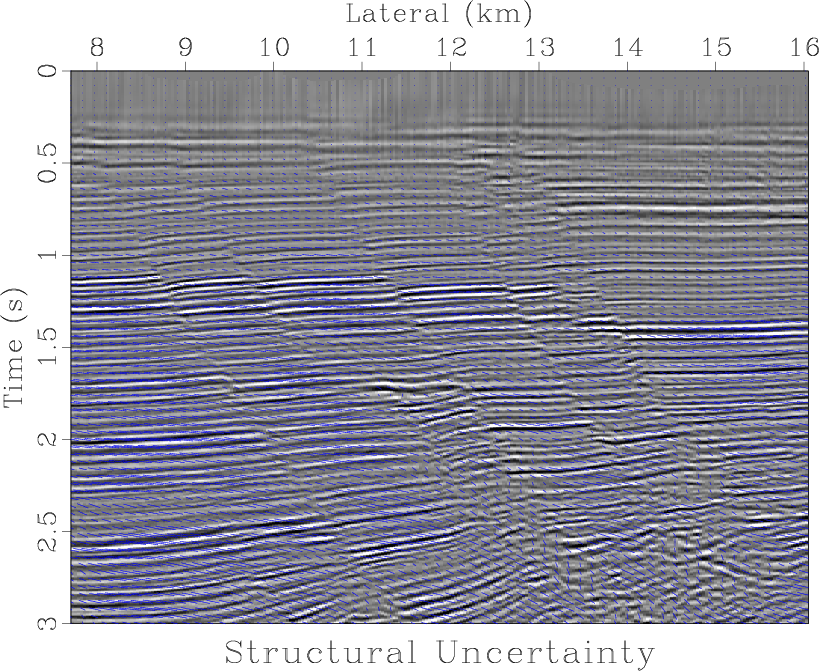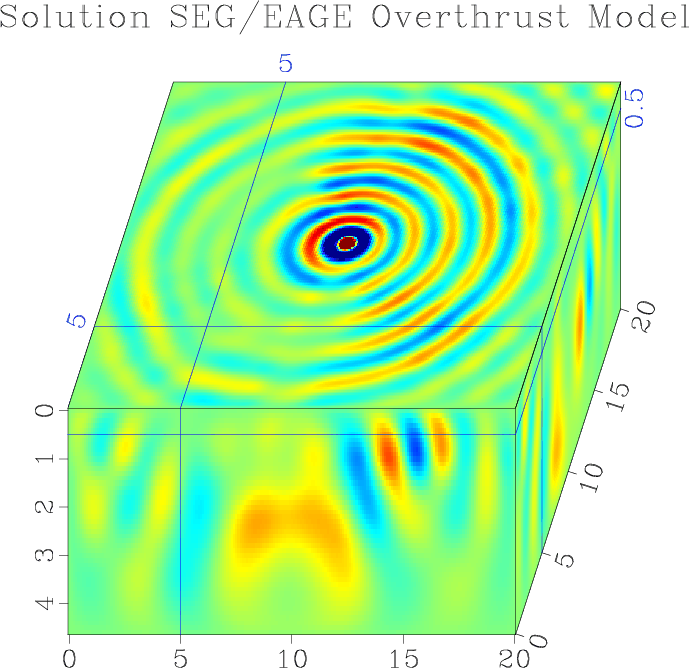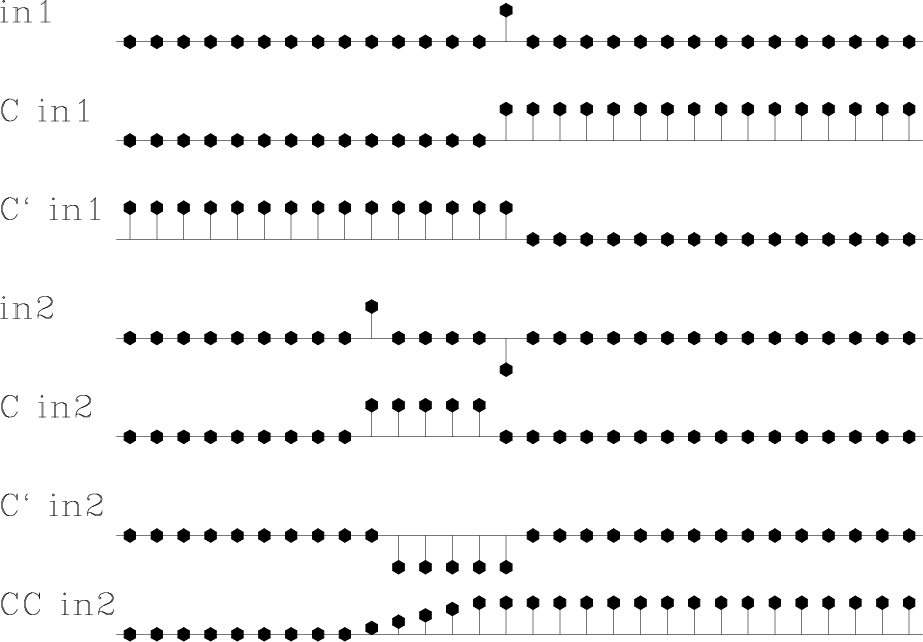sfinttest1 performs forward interpolation from a regular grid to irregular locations (in 1-D).
The following example from sep/forwd/chirp shows regularly sampled values of a variable-frequency signal and the error of its interpolation using linear and cubic-convolution interpolators.
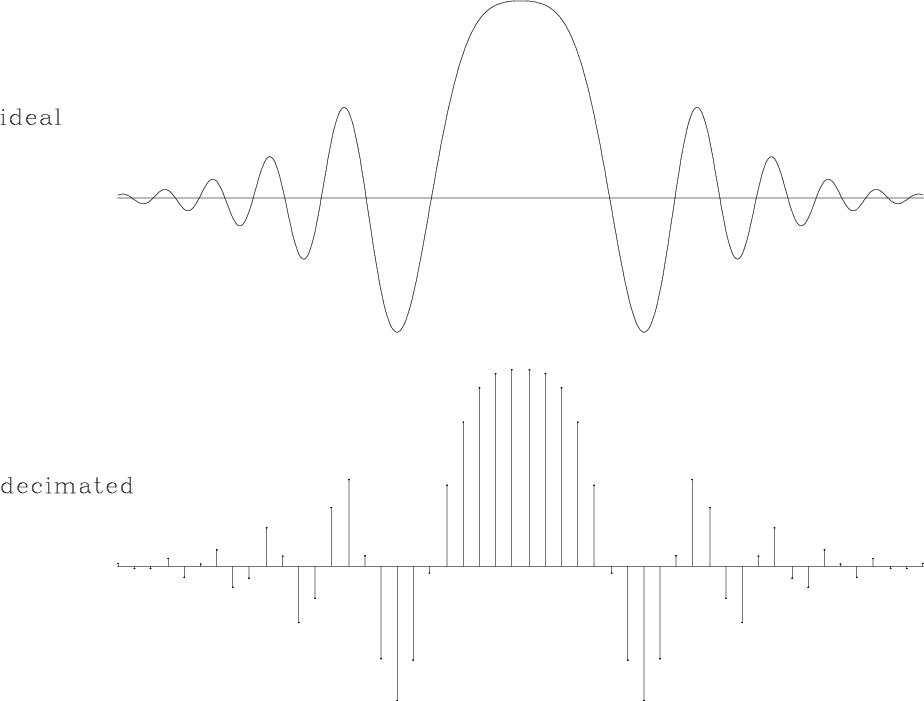
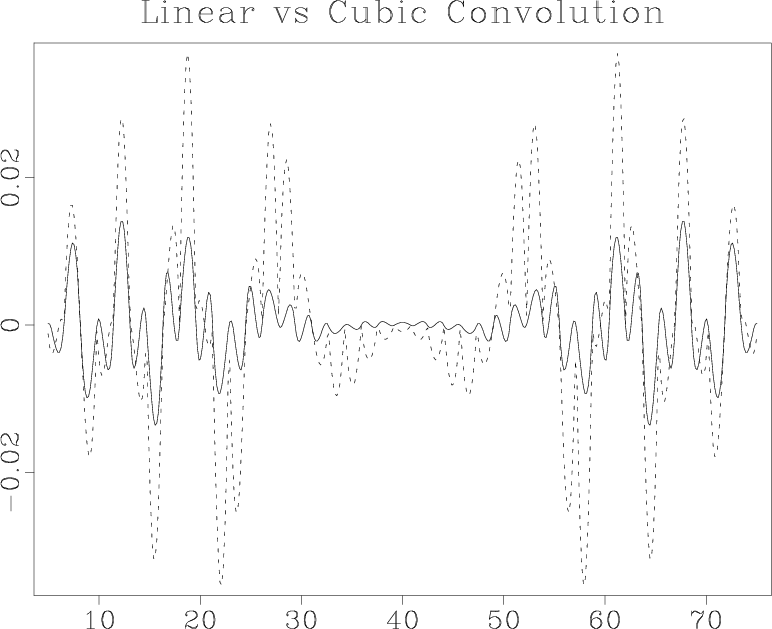
The irregular coordinates for interpolation are supplied in a file specified by coord=. The type of the interpolator is specified by interp=. The currently implemented types are Lagrange (including linear and nearest-neighbor interpolation), cubic convolution, weighted sinc interpolation (with Kaiser, Lanczos, cosine, and Welsh windows), B-spline, and MOM (slightly improved B-spline). The size of the interpolation filter is given by nw=. The Kaiser-window interpolator requires an additional parameter, which is specified by kai=.
An alternative (using invertible cubic spline interpolation) is sfiwarp.
A 2-D version is sfinttest2. The following example from sep/forwd/chirp2 compares the error of Kaiser-windowed 8-point sinc interpolation and 8-point B-spline interpolator applied to interpolating a 2-D signal.
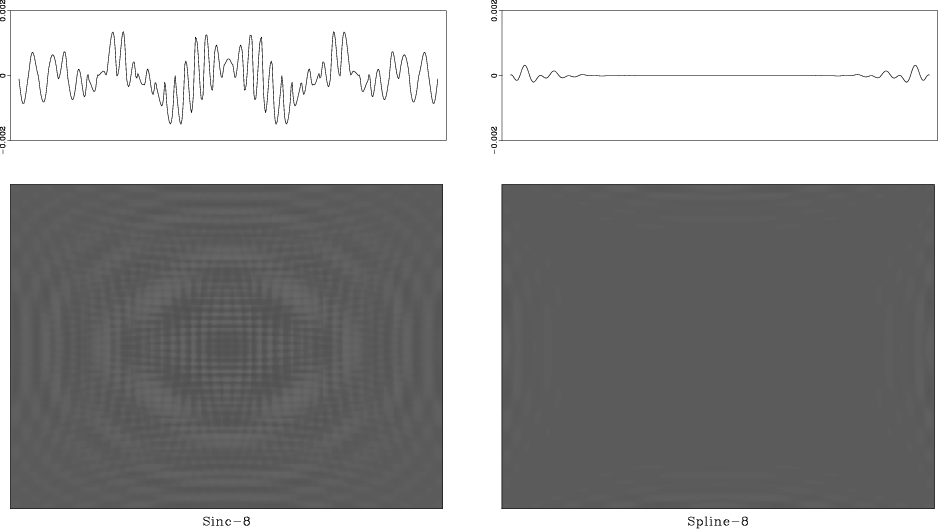
10 previous programs of the month

